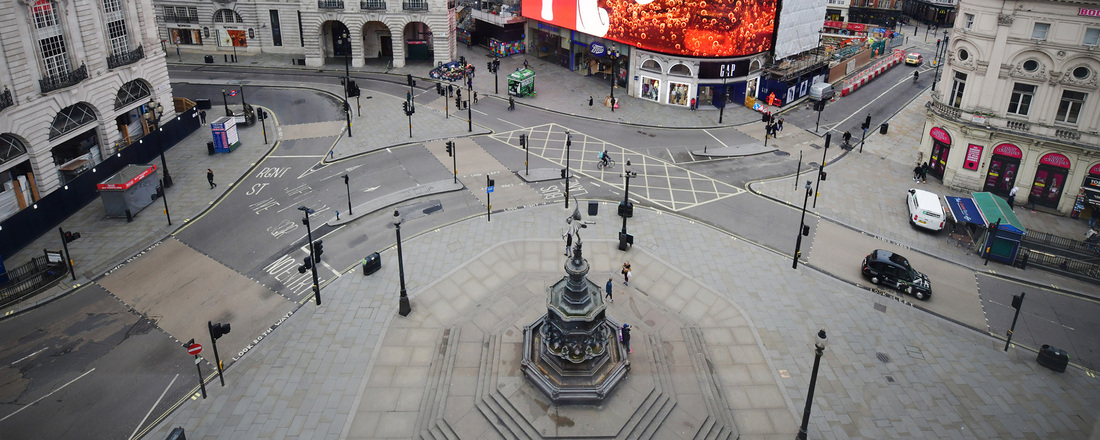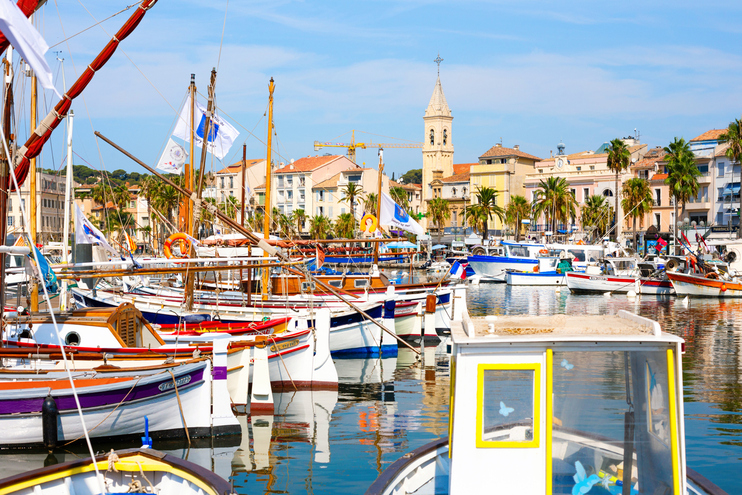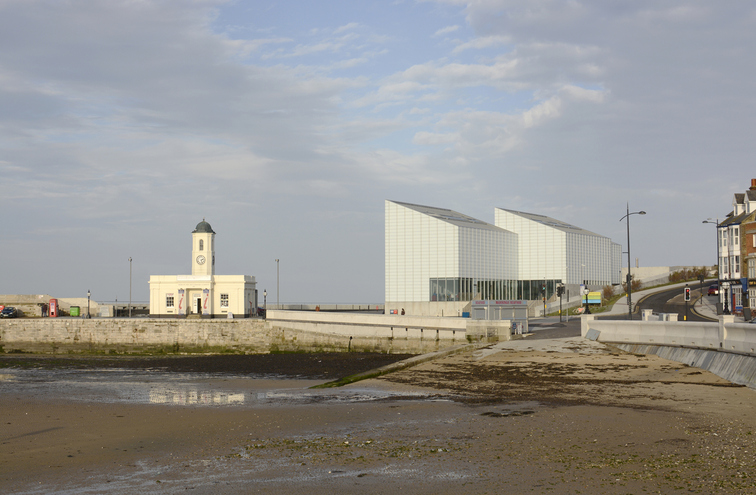Get updates from The Developer straight to your inbox Yes, please!
When Londoners come to towns: “Communities will push back against them”
The sudden influx of city dwellers into towns, small cities and villages can have an impact on local communities, and fears of rising house prices and gentrification are not unfounded. Chris Stokel-Walker reports.

Sophia Matveeva has lived in London much of her life. The daughter of Russian parents, she owns a flat in the UK capital and has lived in London since she went to school there. She runs a retail technology business, which, like many, has gone online as covid-19 has gripped the planet. Suddenly, Matveeva found herself spending a lot of time at home, rather than the office. And she didn’t enjoy it.
In October 2020, Matveeva travelled to Sanary sur Mer, a small southern French town where her mother owns a holiday home, for two weeks of relaxation. “I wanted to eat some nice food and get some sun.” She hasn’t left. “The news out of London kept getting worse – and the restrictions did, too. I thought, ‘I’m not going to see my friends or enjoy the benefits of London, so I might as well be in a place with better weather and food.’”
The coronavirus has upended the way we work – and increasingly, it’s altering the way we live. Stuck at home, struggling to hold meetings in crowded flatshares, we’re shunning big cities and favouring the sticks. The work from home revolution threatens to swallow up and spit out the housing market. Matveeva’s international move, which happened by accident, is extreme. But she’s not the only one leaving London.
Matveeva travelled from London to a small French town for two weeks of relaxation. She hasn’t left.
Last week the government-funded Economic Statistics Centre of Excellence estimated that 700,000 residents of London have left the capital in the past 12 months, predicting an 8 per cent fall in the city’s population. This level of exodus hasn’t happened since the decades following the end of the Second World War.
Data collected by London estate agent Hamptons indicates those leaving London bought 73,950 homes outside the capital in 2020 – the highest number in four years, despite the housing market being entirely shut down for seven weeks due to the coronavirus. For the first time in a decade, the average person fleeing London travelled 40 miles outside the city boundaries to set up their new lives. Before the pandemic hit, in the first quarter of 2020, that was just 28 miles.
“People don’t think they’re going to be tied to the office quite as much as they were,” says Aneisha Beveridge of estate agent Hamptons. “They’re prepared to put their housing needs a little bit above commutability.”
Sevenoaks, Windsor and Maidenhead and Oxford have seen surges in house purchases – in the former’s case, a 39% increase in 2020, as people seek a better work-life balance.
The sudden influx of city dwellers into smaller cities, towns and villages can have an impact on local communities.
A surging population can rewrite the priority list for local councillors now trying to cater to the demands of new residents – for everything from healthcare provision, to cycling infrastructure, to green spaces, to the types of shops and restaurants on the high street.
The handy benefit for small cities is their adaptability, says Reif Larsen of the Future of Small Cities Institute, a US-based organisation. “You have the capacity to open a shop or restaurant more easily, but at the same time, you come into contact with the community easily as well,” says Larsen.
“You’re seeing more people, for better or worse, coming into contact with these communities, and the communities will push back against them.”
Dawn Perry first noticed the letters through her door in July 2020. They came from estate agents who’d spotted her large, country house in the medieval village of Banwell, north Somerset, 17 miles outside of Bristol. They asked if she’d be interested in putting her house up on the market, because there was a queue of buyers who’d snap it up. “I guess today more and more people can work from home, if the internet’s good and so on,” says Perry, who’s also a councillor for Banwell. “It makes property out of city centres far more attractive, I think.”
“When you’re very used to going to quite cosmopolitan restaurants, bars and cafes, you do end up driving back to your favourite places occasionally”
Perry moved from Bristol to Banwell 17 years ago with a young child. Now she says “loads of houses in the village have been bought up by people moving out of London or Bristol”.
“That’s quite an interesting new demographic coming in here.”
The level of interest in Banwell that she first noticed last summer hasn’t slowed since – not even for winter. “Normally it’s early spring when people jump on, but that’s not the case now,” she says.
However, she warns that new arrivals may be in for a culture shock; she faced the same when she moved in the early 2000s: “When you’re very used to going to quite cosmopolitan restaurants, bars and cafes, you do end up driving back to your favourite places occasionally,” she explains.
“As gorgeous as villages are – and there are enormous upsides to them – it’s very difficult to want to go to a little restaurant that was a cottage. It just feels weird. It’s very different in that sort of way.” Perry also never got used to working out in the village hall instead of a gym.
Larsen worries about the risk of big city dwellers pushing small cities into uncomfortable, unusual directions. “It’s not bad to have that influx of culture or shops opening, but then the question becomes, ‘What kind of development do we want?’” he asks.
Change can spark tensions. When seaside town Hastings announced it would build a contemporary art gallery in 2008, fears of gentrification led protestors to burn a model of the gallery in effigy. Margate’s Turner Contemporary gallery, built in 2011, was similarly accused of courting gentrification and failing to support local artists, although it did create 100 full-time equivalent jobs and brought thousands of visitors to the town.
“We haven’t yet figured out the trend of urban development that doesn’t inevitably lead to gentrification,” Larsen says. “The model can’t just be that we push people out further and further, so the London suburbs eventually bleed out to Newcastle.”
Larsen is concerned that the rapid rise in house prices, as seen in London, spreads like a contagion. “That’s my real worry: what inequity gaps will we see going forward that have been stressed during Covid? What are the plans for small cities to address that in their resilience plans?”
Larsen also wonders how public services will manage an influx of more demanding residents. “Small cities are marked by a lack of capacity,” he says. “Small city governments have people doing six jobs at once. There’s never enough money. The tax base is small. To get things done, they have to lean into this ecosystem of non-profits, civic organisations, neighbourhood councils and academic institutions that slot into those gaps.”
“What inequity gaps will we see going forward that have been stressed during Covid? What are the plans for small cities to address that in their resilience plans?”
There’s also the fear – once the pandemic is tamed by vaccines – that the work-from-home revolution will be less permanent than thought. If offices reopen in 2022 for five-day-a-week working, will the workforce move back to the city? “I don’t think anyone really knows the answer,” says Beveridge. “I think it’s likely to be a permanent thing, but I think the rush we’ve seen isn’t going to be quite so permanent.”
For Matveeva, the decision to stay or go will hinge, not on the number of bars, restaurants, cycle paths or parks, but on the social life. “It’s difficult to meet people: what are you going to do – walk up to them at a market and say, ‘Do you want to be friends?’” she asks.
But she has a plan. When Matveeva arrived in Sanary sur Mer, she joined the local community Facebook group and started posting. “At first I thought it was going to be people exchanging tips on how to fix your fridge, but yesterday there was a post from a Ukrainian lady, who very much like me came here because it’s nicer [in] lockdown than wherever she was,” Matveeva explains. “She posted saying she didn’t know many people; she’s an entrepreneur, she works at home, does anyone want to get a glass of wine together? I responded, and then all these other people responded.”
After we speak, Matveeva is off to meet her new friend for the first time – she’s even dressed for the occasion. There’s a nervousness in her voice that suggests her impromptu move to a sleepy French village may outlast the pandemic. Matveeva may have come for the short haul, but new residents like her could end up staying and reshaping their adopted villages, towns and small cities.
“I think we’re very much in the middle of trying to figure out what small cities need to offer,” says Larsen. “This is an international phenomenon we’re seeing, and there are nuances, but many of the core questions are similar.”
Sign up to our newsletter
Get updates from The Developer straight to your inbox
Thanks to our organisation members
© Festival of Place - Tweak Ltd., 124 City Road, London, EC1V 2NX. Tel: 020 3326 7238
© Festival of Place - Tweak Ltd., 124 City Road, London, EC1V 2NX. Tel: 020 3326 7238


